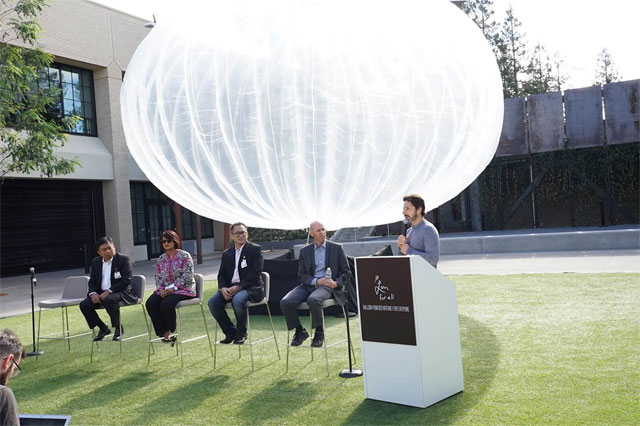
The ambitious "Project Loon" is aimed at delivering Internet connections to remote or impoverished areas worldwide using a floating network of thousands of the high-tech balloons.
Google unveils new Nexus phones aimed at high-end customers
Once on the edge of space, the balloons will be twice as high as commercial airliners, above any bad weather and barely visible to the naked eye, Google says. First tests were carried out in New Zealand in 2013.
Indonesia is a good candidate for further testing because only a third of its 250 million people has access to the Internet, many of them only at slow speeds, Mike Cassidy, vice president of Project Loon, said in a blog post.
Indonesia comprises thousands of islands, some of them jungle or mountainous, which make it tricky to run fiber optic cable or install mobile phone towers.
Bye bye Google, hello Alphabet
"Over the next few years we're hoping that Loon will help put high-speed LTE Internet connections within reach of more than 100 million Indonesians, giving them access to the limitless educational, cultural, and economic opportunities of the Internet," Cassidy said.
The tests next year will be with Indosat, Telkomsel and XL Axiata, Cassidy said, calling it "a key milestone for the Loon team as we continue to test, learn and expand the project".
In July, Sri Lanka said officials had signed an agreement with Google to launch the balloons above the Indian Ocean island this year.
Google launches its Android One phones in Pakistan through QMobile
There has also been testing in California, Brazil and Australia.
Project Loon is part of Google X, the secretive laboratory for experimental projects such as driverless cars that is run by Google parent company Alphabet.








1732354127-0/Untitled-design-(3)1732354127-0-270x192.webp)








COMMENTS
Comments are moderated and generally will be posted if they are on-topic and not abusive.
For more information, please see our Comments FAQ